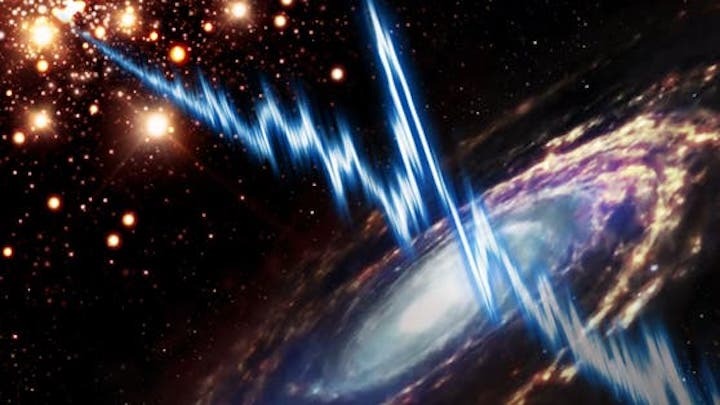19.03.2022

In physics, simplicity is beauty. Chinese astronomers, using devices including the world's most sensitive radio telescope, identified a single parameter to describe the mysterious repeating fast radio bursts hailing from far beyond the Milky Way.
The study published on Friday in the journal, Science, revealed whether those repeaters come with polarization, a phenomenon that waves oscillate in more than one direction, depending on their frequencies.
Fast radio bursts (FRBs) are the brightest millisecond-duration astronomical transients in radio bands with yet unknown origins.
The research team led by Li Di from the National Astronomical Observatories of the Chinese Academy of Sciences (NAOC) analyzed the polarization properties of five repeating FRB sources using the Five-hundred-meter Aperture Spherical radio Telescope (FAST) in China and the Robert C. Byrd Green Bank Telescope (GBT) in the United States.
They found that the linear polarization of those FRBs tends to depolarize toward lower frequencies, which can be well described by a single parameter, namely rotation measure scatter.
With FAST, a total of 1,652 independent bursts from a single repeating FRB source were detected, but all of them were without polarization.
"Non-detection of linear polarization is a norm rather than the exception with FAST in its band between 1.0 to 1.4 GHz, despite its unparalleled sensitivity," said Li, the paper's corresponding author.
In contrast, FRB 121102, a repeating FRB source discovered by Arecibo Radio Telescope in the data from 2012, possesses a high degree of polarization with a correspondingly extremely large rotation measure scatter, which is a product of electron density and magnetic field strength along the line of sight.
The pulse signal could lose part or all of its polarization as the photons are aggregated by the telescope receiver, but such an effect is greater on light waves of lower frequency, which explains why the polarization was not detected at FAST, according to the study.
Polarization of FRBs that passed through regions that put on their own particular stamps can reveal crucial information about their origins, the researchers said.
The simple explanation with one free parameter revealed by the study may help unravel the mystery of FRBs origin in two to three years, the researchers said.
Quelle: Xinhua
